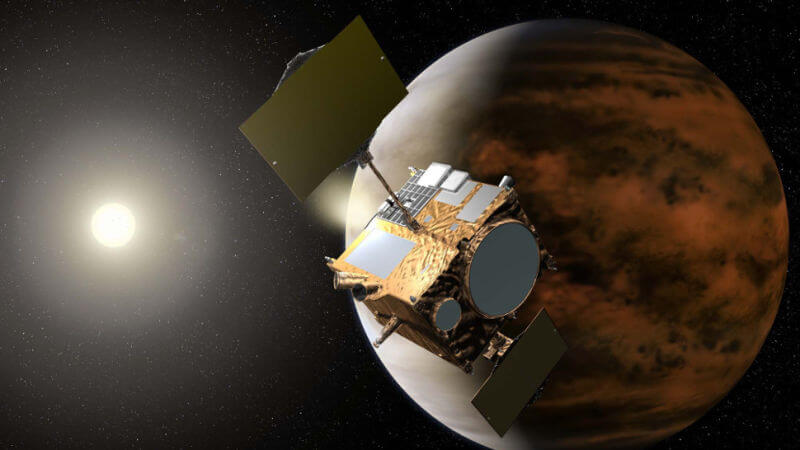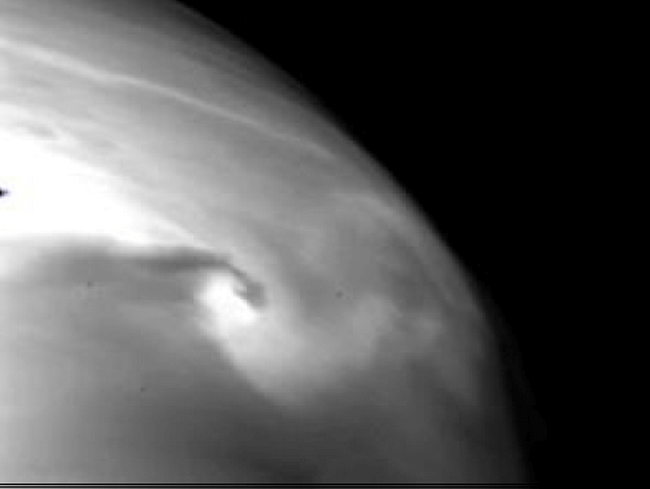- Get link
- X
- Other Apps

Following the news of an unexpected leak of energy, the Japanese space agency had to disconnect two of the five cameras installed on board the Venusian orbital space vehicle Akatsuki. For a probe, this can be very bad news, since the level of exposure to cosmic radiation on the device was much higher than expected.
Back in December last year, the electronics of the device, which operated two of its cameras, began to consume an increased volume of power, which made it impossible for the specialists of the control center to use its scientific instruments. After several weeks of unsuccessful attempts to solve the problem of energy leakage, the control center decided to turn off the two cameras of the device - IR1 and IR2. The Japanese space agency JAXA will periodically try to restart the probe's cameras in the hope that the power supply problem can somehow be decided by itself, but the prospects are not yet rosy.
The core of the problem, according to experts JAXA, is likely to be the degradation of electronic parts of the computer system, which, as it turned out, was exposed to excessive cosmic radiation. Back in 2010, the device was not able to accurately fulfill the task set before him for rapprochement with Venus, as a result of which, during the next five years, he had to plan around the Sun unplanned. And yet by December 7, 2015, "Akatsuki" was finally able to reach its destination and reached the alternative elliptical orbit of the planet. The probe began studying the Venusian atmosphere in April 2016, and everything seemed to be going well.
But, most likely, an earlier episode in the history of the space adventures of the device - entering the Sun's orbit - adversely affected the electronics of the Akatsuki, and it received a higher dose of radiation than planned, which could cause problems in its work.

A whirlwind storm in the clouds of Venus. Despite the fact that similar phenomena were observed in our atmosphere, the phenomenon was observed on Venus for the first time (Photo: JAXA)
As a result, problems with the IR1 and IR2 cameras started to be used to create images of the thermal radiation from the surface of Venus, when the apparatus was to descend into the lower layers of its atmosphere. The three remaining cameras are still operating in native modes, allowing the control center to take pictures of the planet's surface in normal light, in the ultraviolet range, and also in the long infrared. The mission of the device continues, as planned, but there are fears that other of its instruments could be exposed to an increased volume of radiation and may also fail. The initial planned time of the probe is 4.5 years, but it has already started showing signs of its degradation after only 1 year, spent in orbit of its original research goal.
Of course, this can not but upset, because "Akatsuki" really provided a truly unique scientific data about the planet. For example, last year the IR2 camera photographed a vortex storm in the clouds of Venus, which was interesting to scientists, because such phenomena are not usually observed in the atmosphere of planets, where the wind speed reaches 360 kilometers per hour.
Within the framework of another interesting discovery, the probe detected a certain structure of a fixed atmospheric mass, extending for almost 10,000 kilometers in the atmosphere of Venus. According to JAXA, they witnessed the largest "gravitational wave" ever documented in the solar system. The probe "Akatsuki" showed us all that Venus is a very interesting planet, which has many mysteries. And to unravel many of them, it would be nice to send an autonomous rover to its surface.
Now it remains to be hoped that the incident is local and Akatsuki will be able to continue its scientific activity for at least another couple of years. Meanwhile, engineers on Earth will consider how to make the space scientific instruments of future vehicles even more reliable and durable against the invisible impact of harmful cosmic radiation.
The article is based on materials .
- Get link
- X
- Other Apps
Comments
Post a Comment